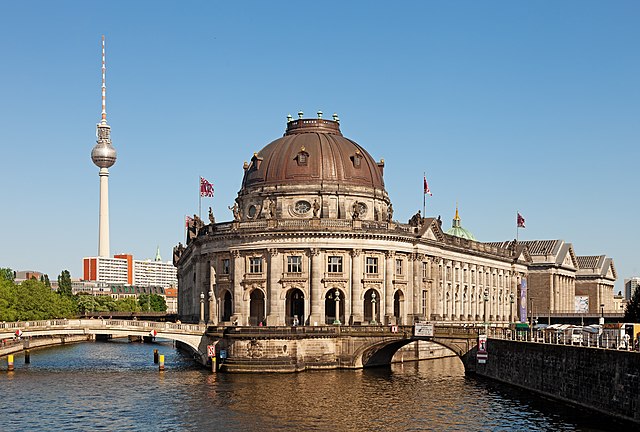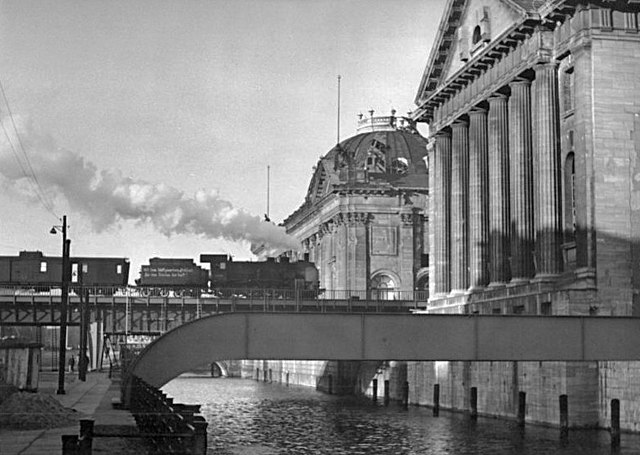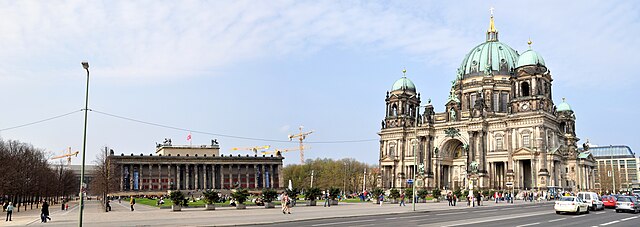The Lustgarten is a park in Museum Island in central Berlin at the foreground of the Altes Museum. It is next to the Berliner Dom and near the site of the former Berliner Stadtschloss of which it was originally a part. At various times in its history, the park has been used as a parade ground, a place for mass rallies and a public park.
Lustgarten in front of the Old Museum
The Lustgarten, looking north-east towards the Berlin Cathedral
The Lustgarten in 1900, looking north-west toward the Old Museum
The Museum Island is a museum complex on the northern part of the Spree Island in the historic heart of Berlin, Germany. It is one of the capital's most visited sights and one of the most important museum sites in Europe. Originally, built from 1830 to 1930, by order of the Prussian Kings, according to plans by five architects, the Museum Island was designated a UNESCO World Heritage Site in 1999 because of its testimony to the architectural and cultural development of museums in the 19th and 20th centuries. It consists of the Altes Museum, the Neues Museum, the Alte Nationalgalerie, the Bode-Museum and the Pergamonmuseum. As the Museum Island designation includes all of Spree Island north of the Karl Leibniz avenue, the historic Berlin Cathedral is also located there, next to the open Lustgarten park. To the south of Leibniz avenue, the reconstructed Berlin Palace houses the Humboldt Forum museum and opened in 2020. Also adjacent, across the west branch of the Spree is the German Historical Museum. Since German reunification, the Museum Island has been rebuilt and extended according to a master plan. In 2019, a new visitor center and art gallery, the James Simon Gallery, was opened within the Museum Island heritage site.

The Bode-Museum on Museum Island
Museum Island with Pergamon and Bode Museum, 1951
Panorama with River Spree
Altes Museum, Lustgarten, and Berlin Cathedral







